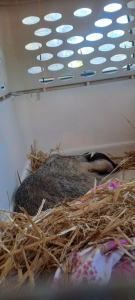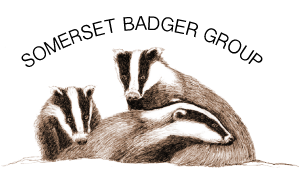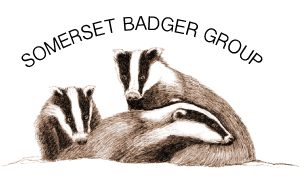 A member of our group recently got involved with helping a badger cub in … Israel! And we can now share the story with you.
A member of our group recently got involved with helping a badger cub in … Israel! And we can now share the story with you.
The member says “Attitudes have changed over the past few years with regards to how we deal with injured or sick badger cubs. It wasn’t that long ago that a badger cub entering rehabilitation for treatment would automatically be placed into a Long-Term Rehabilitation (LTR) programme and the thought of exploring a natal return was rarely considered.
Fortunately, things have moved on now and most rehabilitators and rescue centres explore the potential of a natal return (of a cub back to its social group), once it has received treatment.
In mid-June Badger Trust (BT) received a message from the Agamon Wildlife Rehabilitation Centre in Israel, who had recently been given a 16-week-old badger cub following treatment at a local wildlife hospital. The cub had been suffering from a blood borne parasite, but was now fit and ready for release.
Rona Valency, who is the Vet and manager at the Agamon Wildlife Rehabilitation Centre contacted BT enquiring for information of how the UK deal with the natal return of badger cubs. In turn, BT contacted me and asked if I could advise them.
Where I can, I do like to get involved in badger cub releases, but having discussed this with Somerset Badger Group there was a reluctance in paying for my travel expenses!
I have to admit my knowledge of badgers outside of the UK (other than the honey badger) is limited and I don’t mind admitting that prior to contacting Rona I Googled “Badgers Israel” and many combinations of such words, till my fingers hurt!
It transpires that Israel does have the honey badger, but it is absent almost to the point of extinction. However, when I spoke with Rona, she was able to inform me that their badger cub (Caucasian badger: Meles canescens) was a species very similar in appearance and habits to our Meles meles. In fact, scientists at onetime considered it to be a sub species of Meles meles, but subsequent DNA work has shown it to be a completely different species.
The important factors in this potential release were that this particular species had familiar ecological characteristics, such as living in social groups and having recognised territories. I felt that the knowledge we have gained over the past few years would be transferable to their badger species.
The good news was that there was reliable information as to the exact area the badger cub had been found, though a subsequent search did not reveal a location of a main sett. A full survey of the area was hampered by the risks of land mines! However, due to the age of the cub (now approaching 18 weeks old) I felt confident that the release of this cub back into the territory the cub was found (despite the lack of a known sett), would not present the cub with any significant difficulties.
Rona was interested in undertaking Post Release Monitoring (PRM) of the cub and we were able to provide information on the use of RFID on a feeding tube/station once the cub was released. It is interesting to learn how other people deal with and monitor their wildlife and Rona was familiar with RFID, having used it on barn owls and other species.
Whilst we have bTB to deal with in the UK, Israel does not face this challenge but rabies, parvo and distemper are significant factors when dealing with and releasing wildlife in this region. Rona also explained that some areas associated with the territory may be subject to land mines, something we certainly do not have to encounter and perhaps we should spare a thought for people working and protecting wildlife in such challenging environments.
Rona highlighted the significant issue of distemper in badgers within Israel and I was able to put her in contact with Dr Elizabeth Mullineaux (Vet) who is the go-to person for badger health issues!
Prior to release, Rona and her team provided the cub with naturally occurring food (similar to its environment) and the cub’s food was covered over with a board. This board would be taken to the
release site and used to cover support food. The fact that the cub was now habituated to removing the board; this would be beneficial in keeping the food fresh and help to prevent non-target species taking the food before the badger.
Having formulated a release plan Rona and her colleagues successfully released the cub on the 24th June.
One interesting point was that the cub was very reluctant to leave the carry crate and I was able to explain that the hard plastic cat/dog carriers (which are predominately enclosed) are not the best
equipment for releases. Badgers feel comfortable in dark enclosed places and these types of carriers provide just that sort of environment, thus the badger is reluctant to leave. Wire cage carriers are much better for natural dispersal, and the use of a blanket or sheet which can be removed gradually so the animal familiarises itself with their environment works much better.
It was great to be a small part in helping other badger people and interesting to see the similarities between the two species.
You can find out more about Agamon Wildlife here: https://www.instagram.com/agamon.wildlife.rehabilitation/?hl=en



